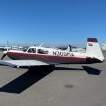BFR / Flight Training Plans / IPC workflow (+/- with advanced avionics)
-
Members Online
- NickG
- PT20J
- 802flyer
- dr_caligari
- FlyingDude
- Aerodon
- AndreiC
- kortopates
- Lionudakis
- Lptoro
- FlyingScot
- Igor_U
- AviH
- Grumpy
- georgewdean1020
- spistora
- ohdub
- pilot_jb
- dkkim73
- MikeOH
- Danb
- Marc B
- MatthiasArnold
- GeeBee
- ProtoFly
- Larry
- N201MKTurbo
- Todd1
- Ragsf15e
- anthonydesmet
- bluehighwayflyer
- rbmaze
- redbaron1982
- kaba
- Geoaviator
- IvanP
- EricJ
- jrwilson
- DonMuncy
- Utah20Gflyer
- BrentS
- BlueSky247
- toto
- crustymuffin


Recommended Posts
Join the conversation
You can post now and register later. If you have an account, sign in now to post with your account.